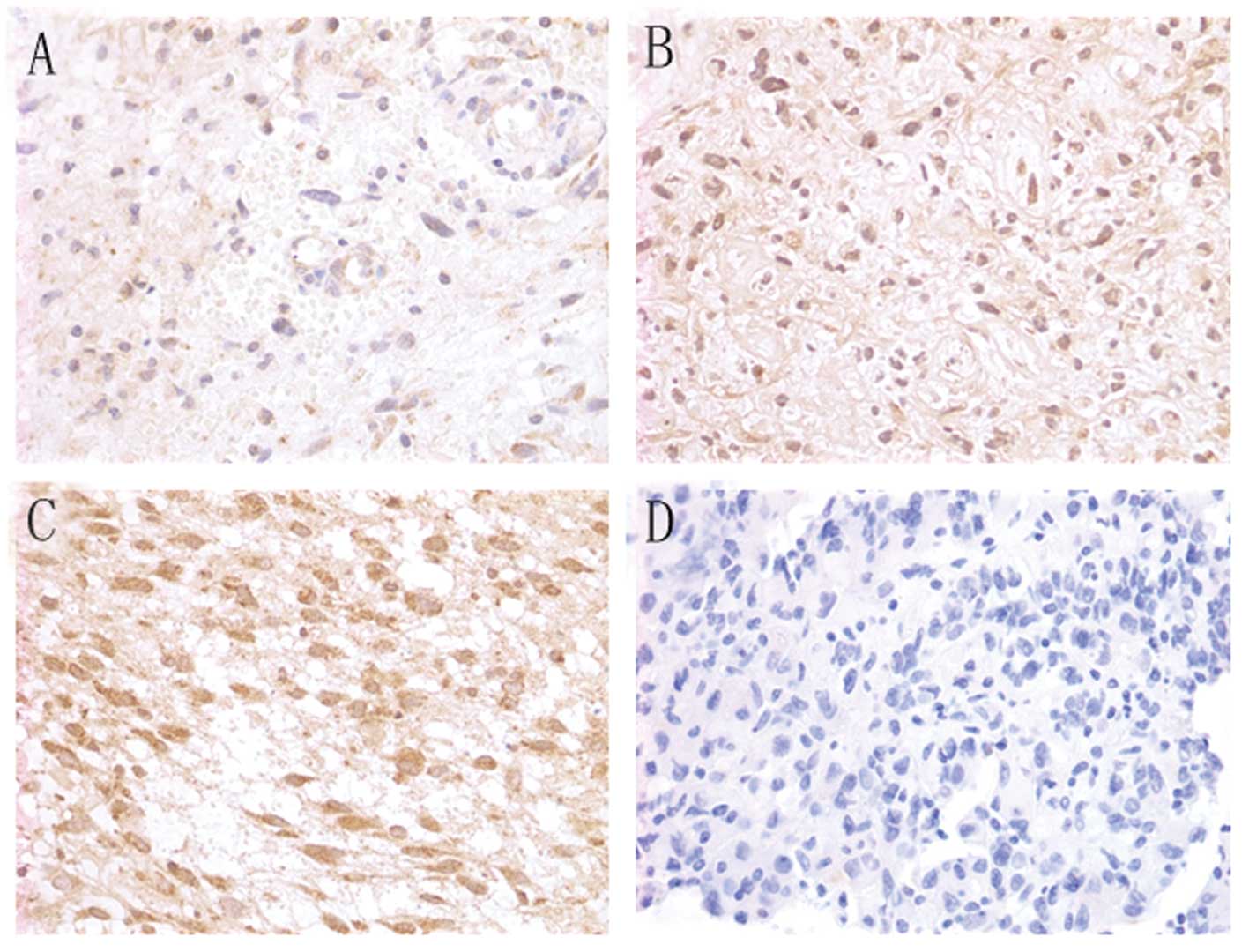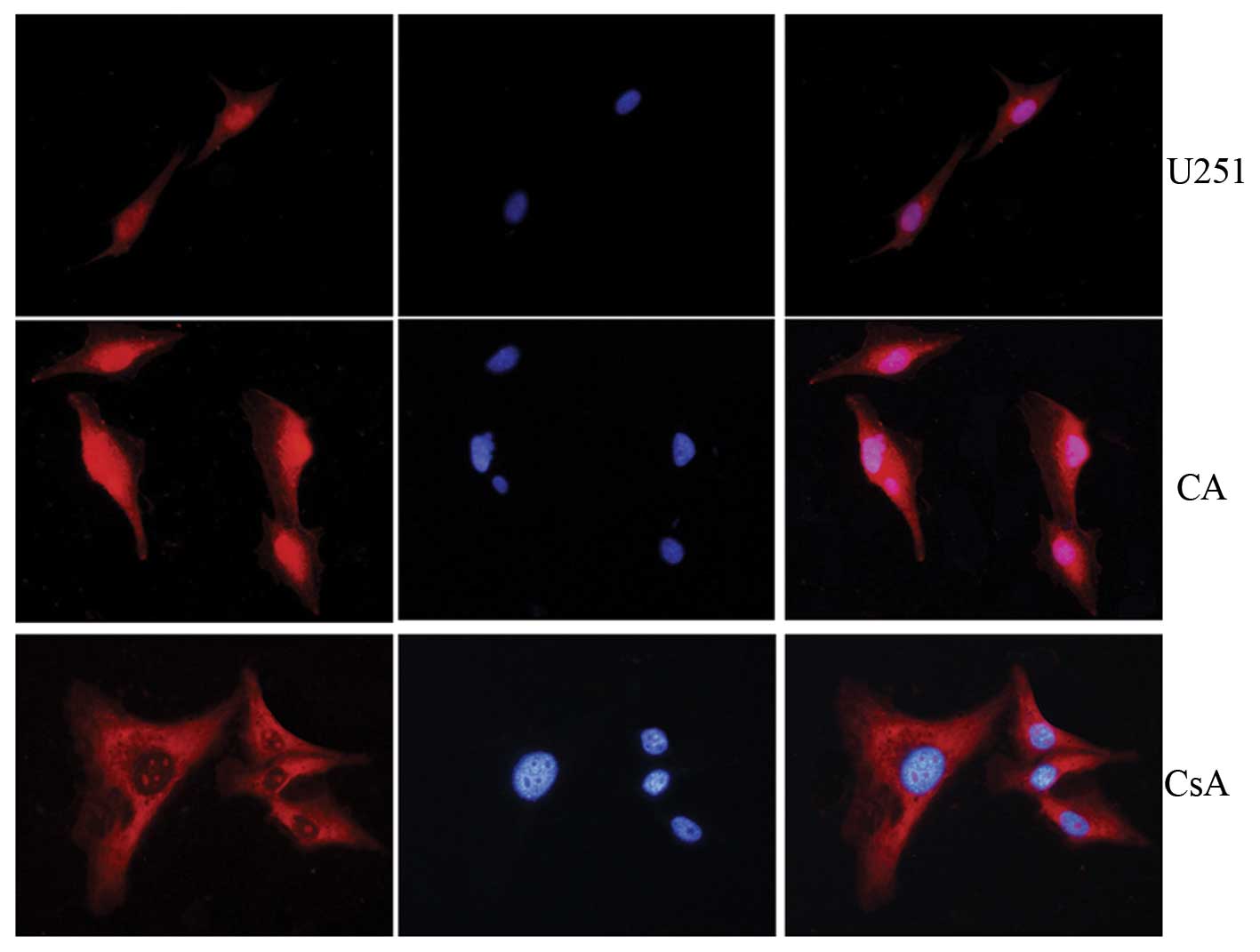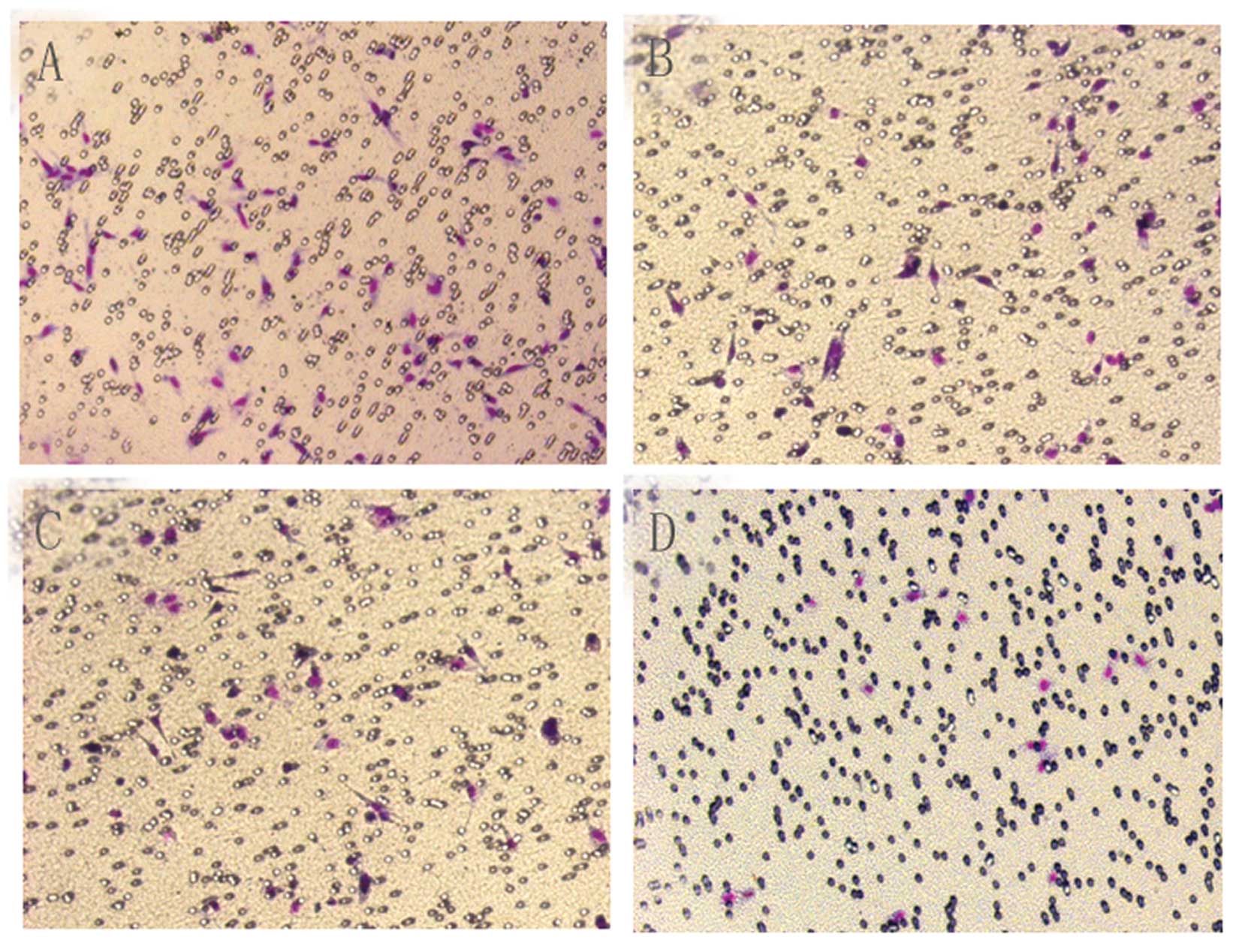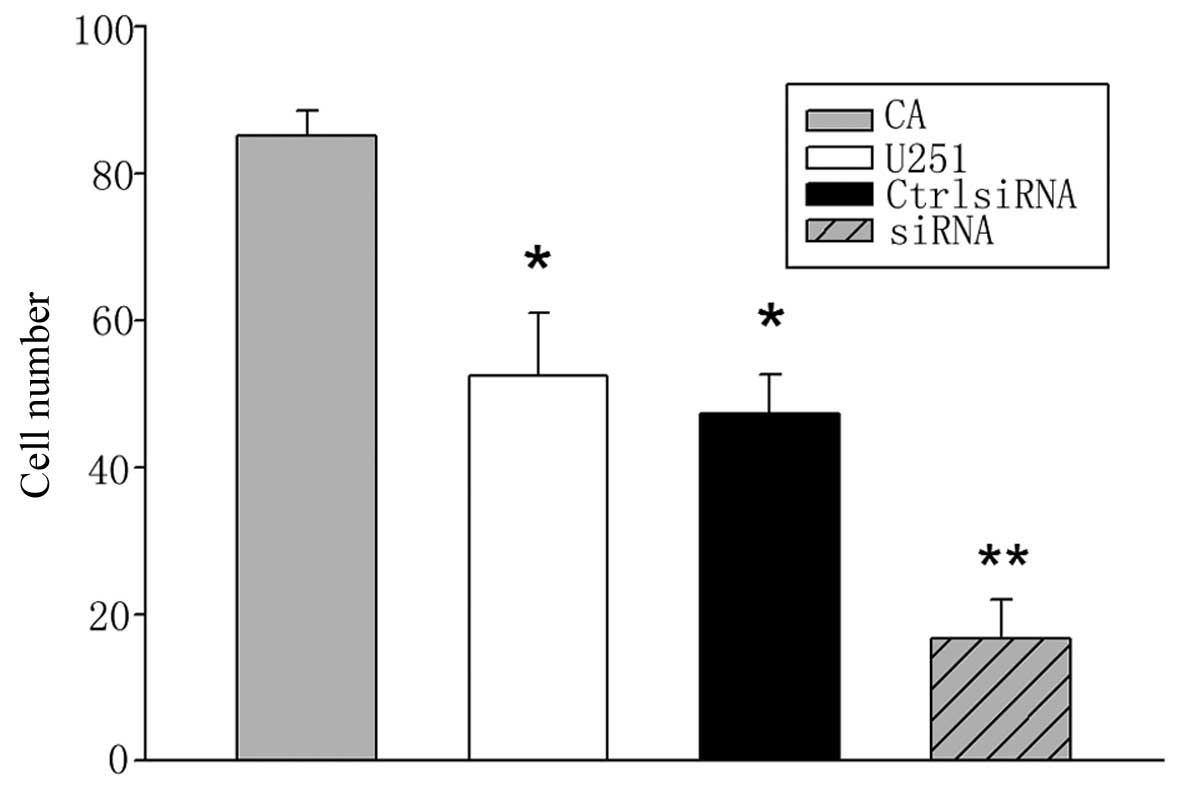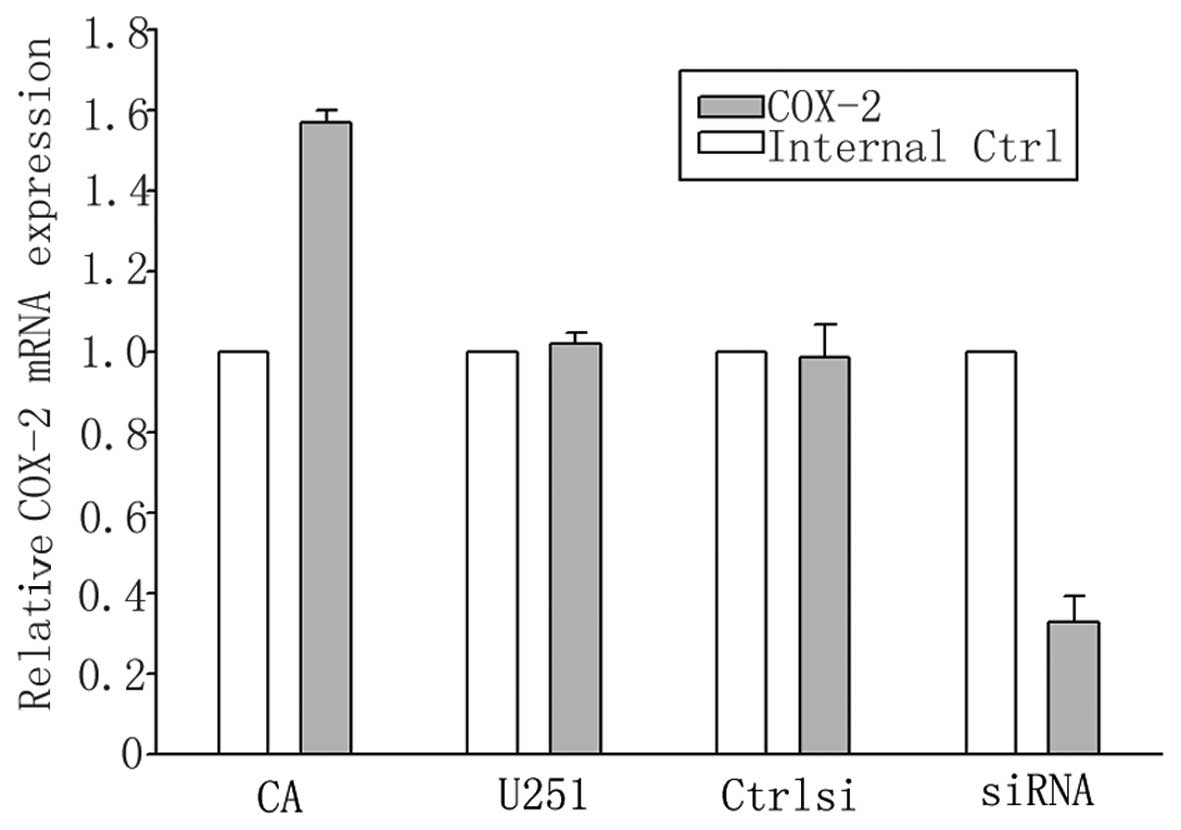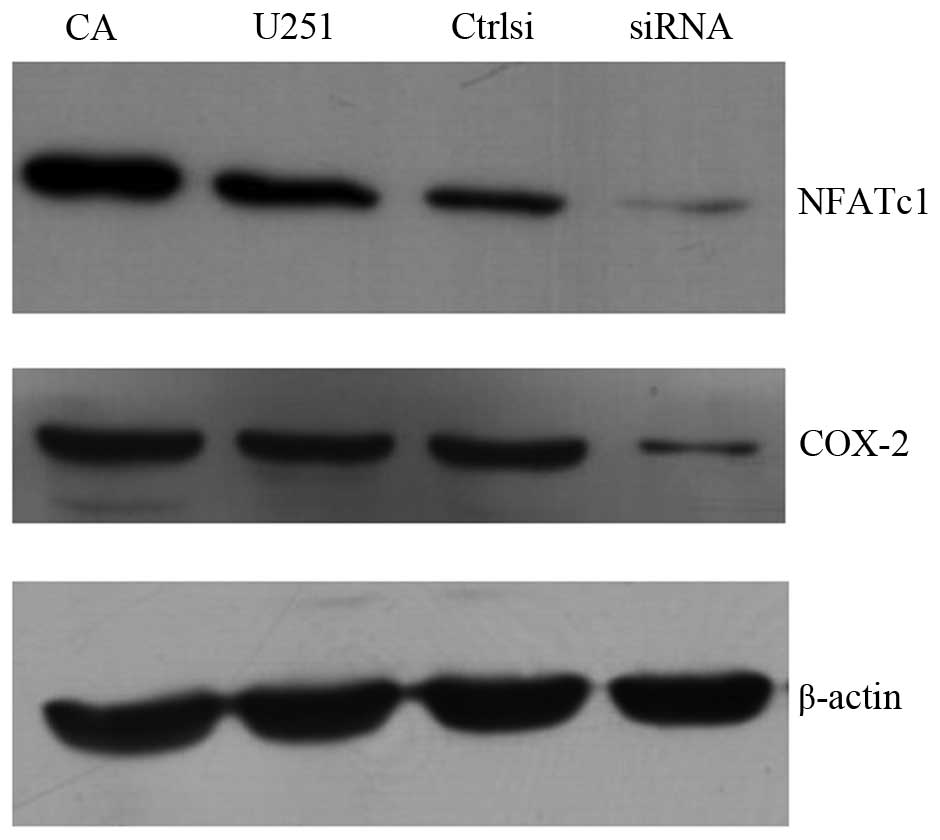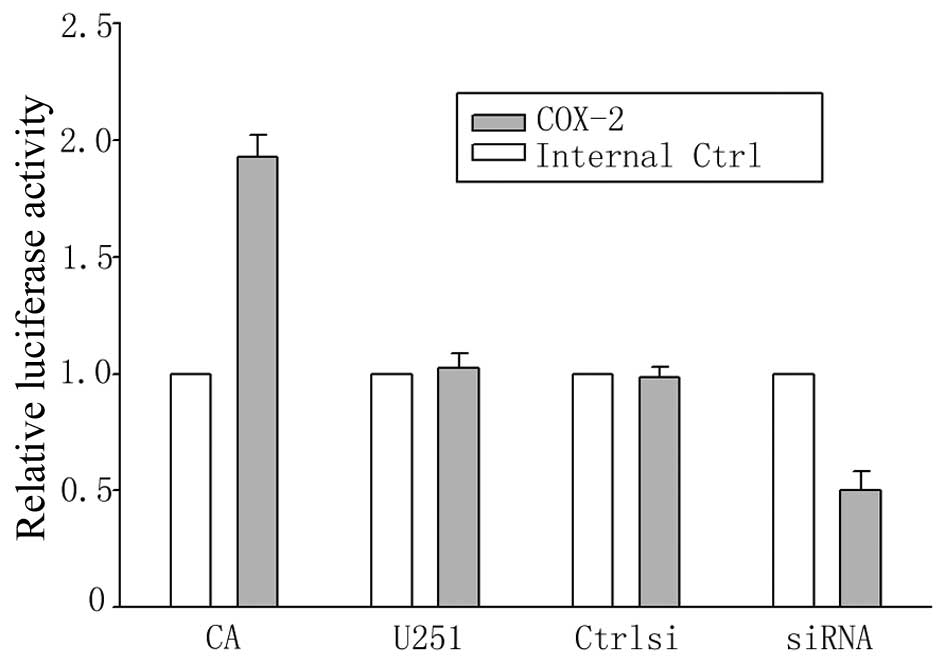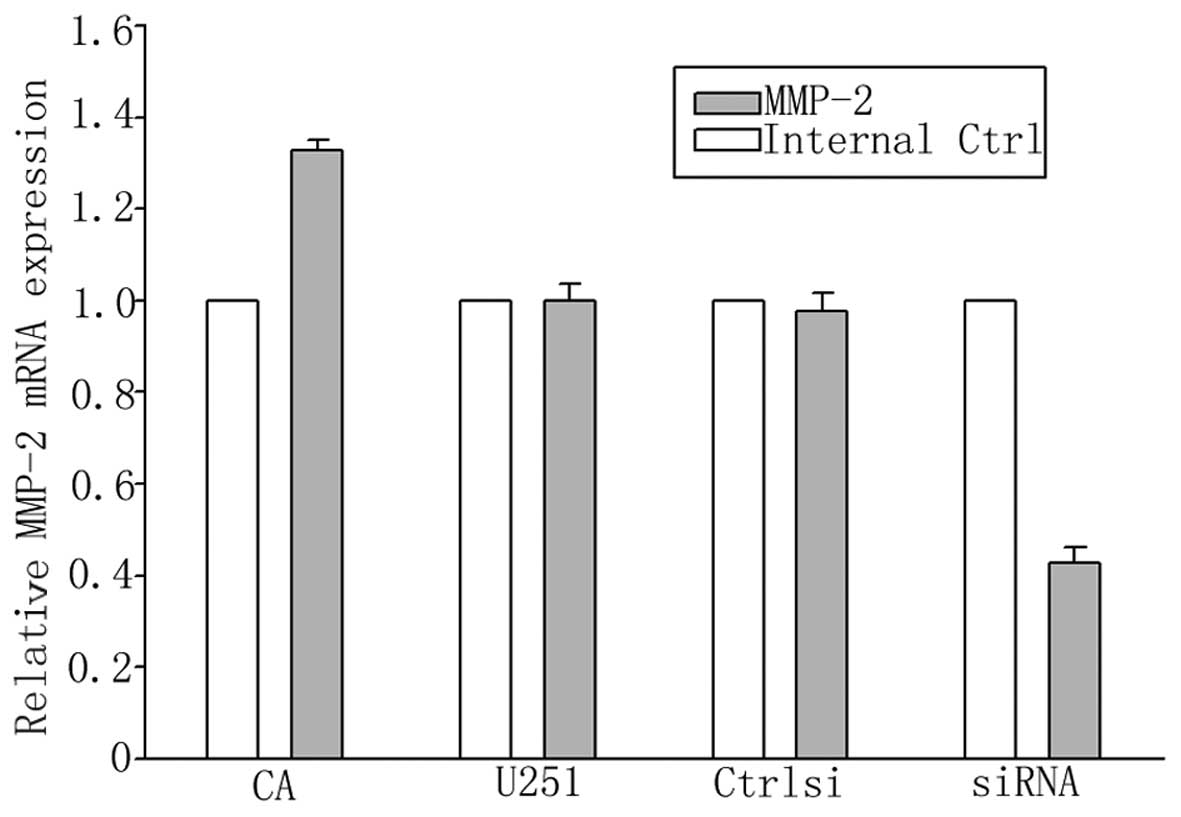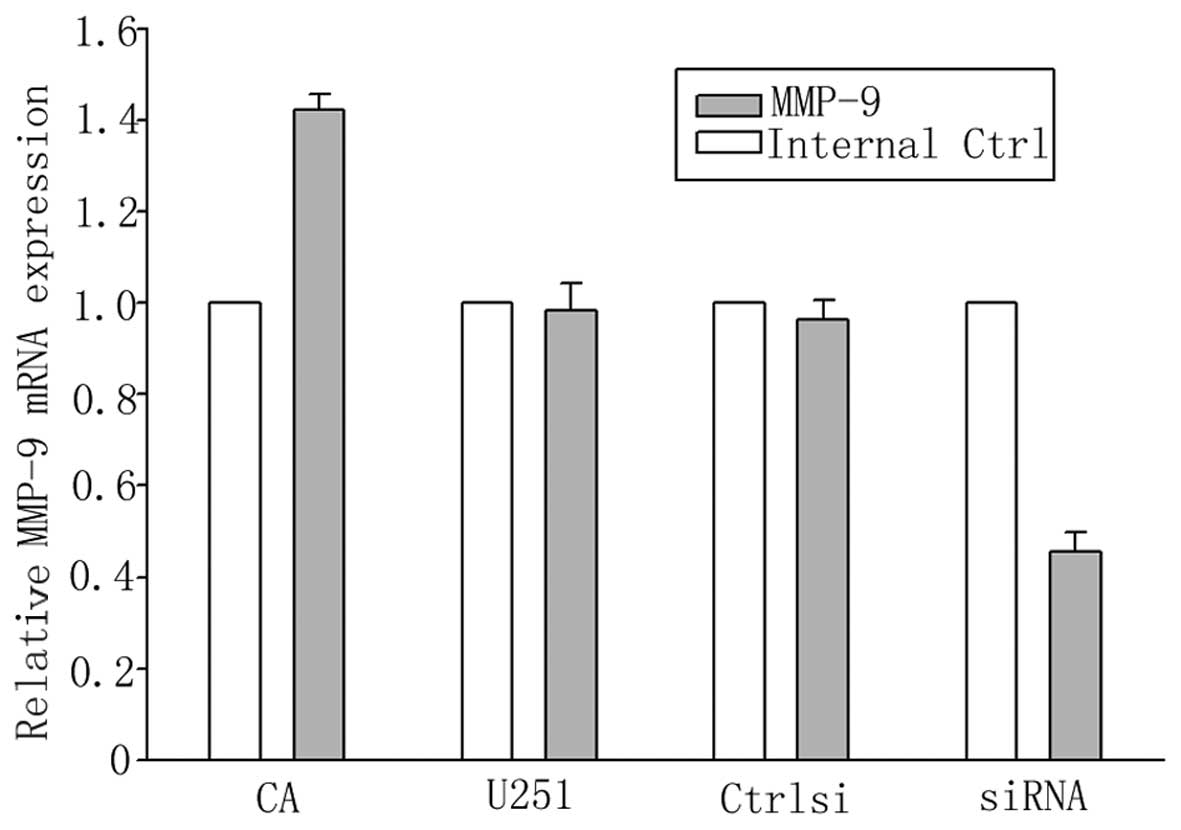|
1
|
Pan MG, Xiong Y and Chen F: NFAT gene
family in inflammation and cancer. Curr Mol Med. 13:543–554. 2013.
View Article : Google Scholar :
|
|
2
|
Daniel C, Gerlach K, Väth M, Neurath MF
and Weigmann B: Nuclear factor of activated T cells – a
transcription factor family as critical regulator in lung and colon
cancer. Int J Cancer. 134:1767–1775. 2014. View Article : Google Scholar
|
|
3
|
Jauliac S, Lopez-Rodriguez C, Shaw LM,
Brown LF, Rao A and Toker A: The role of NFAT transcription factors
in integrin-mediated carcinoma invasion. Nat Cell Biol. 4:540–544.
2002. View
Article : Google Scholar : PubMed/NCBI
|
|
4
|
Medyouf H, Alcalde H, Berthier C, et al:
Targeting calcineurin activation as a therapeutic strategy for
T-cell acute lymphoblastic leukemia. Nat Med. 13:736–741. 2007.
View Article : Google Scholar : PubMed/NCBI
|
|
5
|
Yang P, Cartwright CA, Li J, et al:
Arachidonic acid metabolism in human prostate cancer. Int J Oncol.
41:1495–1503. 2012.PubMed/NCBI
|
|
6
|
Castro-Sánchez L, Agra N, Llorente
Izquierdo C, et al: Regulation of 15-hydroxyprostaglandin
dehydrogenase expression in hepatocellular carcinoma. Int J Biochem
Cell Biol. 45:2501–2511. 2013. View Article : Google Scholar : PubMed/NCBI
|
|
7
|
Smith WL, DeWitt DL and Garavito RM:
Cyclooxygenases: structural, cellular, and molecular biology. Annu
Rev Biochem. 69:145–182. 2000. View Article : Google Scholar : PubMed/NCBI
|
|
8
|
Tomozawa S, Tsuno NH, Sunami E, et al:
Cyclooxygenase-2 overexpression correlates with tumour recurrence,
especially haematogenous metastasis, of colorectal cancer. Br J
Cancer. 83:324–328. 2000. View Article : Google Scholar : PubMed/NCBI
|
|
9
|
Soslow RA, Dannenberg AJ, Rush D, et al:
COX-2 is expressed in human pulmonary, colonic, and mammary tumors.
Cancer. 89:2637–2645. 2000. View Article : Google Scholar
|
|
10
|
Denkert C, Kobel M, Pest S, et al:
Expression of cyclooxygenase 2 is an independent prognostic factor
in human ovarian carcinoma. Am J Pathol. 160:893–903. 2002.
View Article : Google Scholar : PubMed/NCBI
|
|
11
|
Iniguez MA, Rodriguez A, Volpert OV,
Fresno M and Redondo JM: Cyclooxygenase-2: a therapeutic target in
angiogenesis. Trends Mol Med. 9:73–78. 2003. View Article : Google Scholar : PubMed/NCBI
|
|
12
|
Chang SH, Liu CH, Conway R, et al: Role of
prostaglandin E2-dependent angiogenic switch in cyclooxygenase
2-induced breast cancer progression. Proc Natl Acad Sci USA.
101:591–596. 2004. View Article : Google Scholar :
|
|
13
|
Myung SJ and Kim IH: Role of
prostaglandins in colon cancer. Korean J Gastroenterol. 51:274–279.
2008.In Korean. PubMed/NCBI
|
|
14
|
Iniguez MA, Martinez-Martinez S, Punzon C,
Redondo JM and Fresno M: An essential role of the nuclear factor of
activated T cells in the regulation of the expression of the
cyclooxygenase-2 gene in human T lymphocytes. J Biol Chem.
275:23627–23635. 2000. View Article : Google Scholar : PubMed/NCBI
|
|
15
|
Duque J, Fresno M and Iniguez MA:
Expression and function of the nuclear factor of activated T cells
in colon carcinoma cells: involvement in the regulation of
cyclooxygenase-2. J Biol Chem. 280:8686–8693. 2005. View Article : Google Scholar : PubMed/NCBI
|
|
16
|
Crabtree GR and Olson EN: NFAT signaling:
choreographing the social lives of cells. Cell. 109(Suppl): S67–79.
2002. View Article : Google Scholar : PubMed/NCBI
|
|
17
|
Serfling E, Avots A, Klein-Hessling S,
Rudolf R, Vaeth M and Berberich-Siebelt F: NFATc1/αA: The other
face of NFAT factors in lymphocytes. Cell Commun Signal. 10:162012.
View Article : Google Scholar
|
|
18
|
Langworthy M, Zhou B, de Caestecker M,
Moeckel G and Baldwin HS: NFATc1 identifies a population of
proximal tubule cell progenitors. J Am Soc Nephrol. 20:311–321.
2009. View Article : Google Scholar : PubMed/NCBI
|
|
19
|
Cao S, Yan Y, Zhang X, et al: EGF
stimulates cyclooxygenase-2 expression through the STAT5 signaling
pathway in human lung adenocarcinoma A549 cells. Int J Oncol.
39:383–391. 2011.PubMed/NCBI
|
|
20
|
Neal JW and Clipstone NA: A constitutively
active NFATc1 mutant induces a transformed phenotype in 3T3-L1
fibroblasts. J Biol Chem. 278:17246–17254. 2003. View Article : Google Scholar : PubMed/NCBI
|
|
21
|
Wang C, Cao S, Yan Y, et al: TLR9
expression in glioma tissues correlated to glioma progression and
the prognosis of GBM patients. BMC Cancer. 10:4152010. View Article : Google Scholar : PubMed/NCBI
|
|
22
|
Hernandez GL, Volpert OV, Iniguez MA, et
al: Selective inhibition of vascular endothelial growth
factor-mediated angiogenesis by cyclosporin A: roles of the nuclear
factor of activated T cells and cyclooxygenase 2. J Exp Med.
193:607–620. 2001. View Article : Google Scholar : PubMed/NCBI
|
|
23
|
Sugimoto T, Haneda M, Sawano H, et al:
Endothelin-1 induces cyclooxygenase-2 expression via nuclear factor
of activated T-cell transcription factor in glomerular mesangial
cells. J Am Soc Nephrol. 12:1359–1368. 2001.PubMed/NCBI
|
|
24
|
Maier JA, Hla T and Maciag T:
Cyclooxygenase is an immediate-early gene induced by interleukin-1
in human endothelial cells. J Biol Chem. 265:10805–10808.
1990.PubMed/NCBI
|
|
25
|
Herschman HR, Fletcher BS and Kujubu DA:
TIS10, a mitogen-inducible glucocorticoid-inhibited gene that
encodes a second prostaglandin synthase/cyclooxygenase enzyme. J
Lipid Mediat. 6:89–99. 1993.PubMed/NCBI
|
|
26
|
Hogan PG, Chen L, Nardone J and Rao A:
Transcriptional regulation by calcium, calcineurin, and NFAT. Genes
Dev. 17:2205–2232. 2003. View Article : Google Scholar : PubMed/NCBI
|
|
27
|
Mancini M and Toker A: NFAT proteins:
emerging roles in cancer progression. Nat Rev Cancer. 9:810–820.
2009. View
Article : Google Scholar : PubMed/NCBI
|
|
28
|
Buchholz M, Schatz A, Wagner M, et al:
Overexpression of c-myc in pancreatic cancer caused by ectopic
activation of NFATc1 and the Ca2+/calcineurin signaling
pathway. EMBO J. 25:3714–3724. 2006. View Article : Google Scholar : PubMed/NCBI
|
|
29
|
Oikawa T, Nakamura A, Onishi N, Yamada T,
Matsuo K and Saya H: Acquired expression of NFATc1 downregulates
E-cadherin and promotes cancer cell invasion. Cancer Res.
73:5100–5109. 2013. View Article : Google Scholar : PubMed/NCBI
|
|
30
|
Cressey R, Pimpa S, Tontrong W,
Watananupong O and Leartprasertsuke N: Expression of
cyclooxygenase-2 in colorectal adenocarcinoma is associated with
p53 accumulation and hdm2 overexpression. Cancer Lett. 233:232–239.
2006. View Article : Google Scholar
|
|
31
|
Gately S and Li WW: Multiple roles of
COX-2 in tumor angiogenesis: a target for antiangiogenic therapy.
Semin Oncol. 31:2–11. 2004. View Article : Google Scholar : PubMed/NCBI
|
|
32
|
Ogino S, Kirkner GJ, Nosho K, et al:
Cyclooxygenase-2 expression is an independent predictor of poor
prognosis in colon cancer. Clin Cancer Res. 14:8221–8227. 2008.
View Article : Google Scholar : PubMed/NCBI
|
|
33
|
Brown JR and DuBois RN: Cyclooxygenase as
a target in lung cancer. Clin Cancer Res. 10:4266s–4269s. 2004.
View Article : Google Scholar : PubMed/NCBI
|
|
34
|
Wu X, Cai M, Ji F and Lou LM: The impact
of COX-2 on invasion of osteosarcoma cell and its mechanism of
regulation. Cancer Cell Int. 14:272014. View Article : Google Scholar : PubMed/NCBI
|
|
35
|
Yiu GK and Toker A: NFAT induces breast
cancer cell invasion by promoting the induction of
cyclooxygenase-2. J Biol Chem. 281:12210–12217. 2006. View Article : Google Scholar : PubMed/NCBI
|
|
36
|
Lara-Pezzi E, Gomez-Gaviro MV, Galvez BG,
et al: The hepatitis B virus X protein promotes tumor cell invasion
by inducing membrane-type matrix metalloproteinase-1 and
cyclooxygenase-2 expression. J Clin Invest. 110:1831–1838. 2002.
View Article : Google Scholar : PubMed/NCBI
|
|
37
|
Fenwick SW, Toogood GJ, Lodge JP and Hull
MA: The effect of the selective cyclooxygenase-2 inhibitor
rofecoxib on human colorectal cancer liver metastases.
Gastroenterology. 125:716–729. 2003. View Article : Google Scholar : PubMed/NCBI
|
|
38
|
Yao M, Kargman S, Lam EC, et al:
Inhibition of cyclooxygenase-2 by rofecoxib attenuates the growth
and metastatic potential of colorectal carcinoma in mice. Cancer
Res. 63:586–592. 2003.PubMed/NCBI
|
|
39
|
Tsujii M and DuBois RN: Alterations in
cellular adhesion and apoptosis in epithelial cells overexpressing
prostaglandin endoperoxide synthase 2. Cell. 83:493–501. 1995.
View Article : Google Scholar : PubMed/NCBI
|
|
40
|
Tsujii M, Kawano S and DuBois RN:
Cyclooxygenase-2 expression in human colon cancer cells increases
metastatic potential. Proc Natl Acad Sci USA. 94:3336–3340. 1997.
View Article : Google Scholar : PubMed/NCBI
|
|
41
|
Mott JD and Werb Z: Regulation of matrix
biology by matrix metalloproteinases. Curr Opin Cell Biol.
16:558–564. 2004. View Article : Google Scholar : PubMed/NCBI
|















